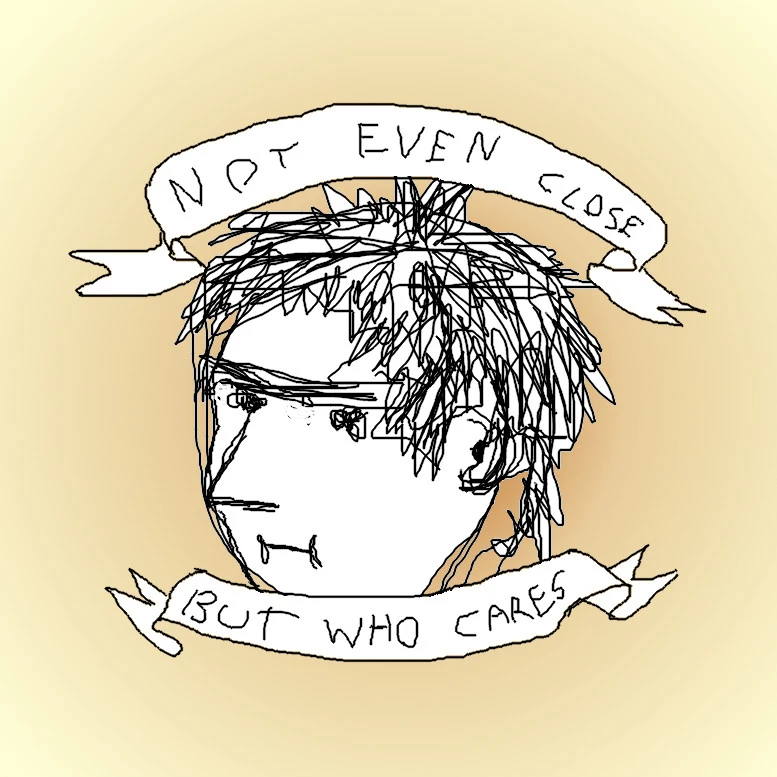4Gb of dependencies so far
Yeah storage is cheap but I last reformated my boot drive in 2017 so my root partition is 20GB and now I have no room for Flatpak. Now I could just resize it but wheres the fun in that.
TL:DR “A 20GB root partition ought to be enough for anybody.”
I seriously want to switch some of the small distros like tinycore as a daily driver.
1GB of RAM and 4GB disk space is more than enough for all but the most bloated apps.
I’ve put steam on a librebooted chromebook with similar stats, it has to install games on a usb drive/sd card but it works quite well even for casual linux gamers
Which Chromebook did you use?
Lenovo n42
I was starting an install of Debian the other day, and it suggested 25 GB as the root partition (including /usr, but not /var, /home, or /tmp). I had to laugh. My server has a 50 GB partition for that purpose and it’s around half full.
I aborted the installation. Might try again later today. (Switching this machine from Kubuntu, using a new drive, so it’s not critical that it be done at a certain time.)
Format with btrfs if you use flatpack, it has deduplication.
I have to admit, I only have the barest understanding of this flatpak, snap, docker, etc. business. I’ve been using Linux since the late 90s and missed this development. I haven’t been following what was happening in the development end, I suppose - in part because there isn’t that much need to, because Linux has gotten so good.
But while I’m a power user (hey, I used Slackware until about 2015), I’ve found that I much prefer not having to spend hours and hours administering my machines every few weeks or months.
Sorry for the long comment. But this has been bugging me for a long time and you triggered me. No need to try to answer my questions if you’re not feeling it, I’m just dumping. You can stop reading here, if you like.
I’ve used a few appimages for limited cases - BalenaEtcher to burn HomeAssistant on to SD cards for my Raspberry Pi, and I think the scanning software I use is also an AppImage. The idea of having the libraries and binaries all together for certain things is a good one for certain cases, such as software I do not use regularly. BelenaEtcher strikes me as a perfect use case for appimage, because I don’t want to spend time installing Balena and keeping it up to date or uninstalling it, when I’m only likely going to use it once or twice. I never even move it out of my Downloads directory, just download, run, and delete.
Ubuntu (I use Kubuntu) moved Firefox to a snap image some time back. I get it, sandboxing, not a bad idea. But I’m pretty sure I had one installed by root, and one erroneously installed by my user account, possibly caused by forgetting to “sudo” during an update one day (I’m really not sure how it happened). And that latter one, if it existed, was almost certainly sitting in my /home directory somewhere, because my user account doesn’t have authority to write to /usr or /opt or anywhere like that. I didn’t plan to install software in /home, and didn’t allocate space for it, and don’t really like the concept in general. (I’ve switched debs for Firefox, and think I got the snaps for it cleaned up.)
If we’re going to do images installed by users, /opt seems like a much better choice, albeit with some controls - maybe /opt/username/ with permissions set by user; I’d be okay with the user account being able to install there and being unable to screw up system files. My current backup strategy involves grabbing everything in /home with a few very specific exceptions, and clearly I don’t need the current release of Firefox on my backup.
I have OpenProject (community edition) installed for keeping track of a restoration project I’m working on, and I’m pretty sure I used docker to install it. I have to admit it was easy to install (but so are debs 99.9% of the time), but now I’m wondering about the best way to get the data back out so I can migrate that software to my server (it’s running on my desktop because my server was that 2008 computer). I assume I can backup and restore, but I haven’t yet looked into this. Or heck, maybe it’s possible to just move the Docker image, the way I moved the HomeAssistant KVM image. It looks like the data is stored in a separate volume (which I interpret to mean a file that acts as a virtual disk, similar to how KVM has a virtual disk for the OS and apps in the virtual machine). Also, I’m not clear if docker images automatically update or if I should be updating them manually.
Then there’s Zwift. Zwift is a virtual cycling program that runs on Windows, Mac, Android, and iOS. No Linux client, which isn’t a surprise. I have a whole Windows 10 computer in the basement that only runs Zwift, and it’s my only Windows machine that I use. But, someone created a docker image of Zwift! I tried it on my Linux desktop machine a while back, and it worked. Very cool! But Zwift updates the program regularly, introducing new bugs and features - does the maintainer of that image have to do anything? What if he or she loses interest? It’d be nice to ditch Windows, but I have no idea if that docker image will remain usable indefinitely.
I think Zwift is using Wine to run. So it seems the docker image for that has the Zwift Windows client, some Wine libraries, and everything supporting Wine is already supplied by the Kubuntu install…but I’m really not sure. Theoretically I don’t need to know, until something breaks.
I have yet to use a flatpak, I think.
I’ve considered asking about all of this in the Linux community here on Lemmy, but there’s probably an article with an overview of it somewhere, and I just need to search for it.
WTF!? Didn’t know you could post dissertations here!
I use flatpaks on my desktop all the time, no issue with storage space. But my laptop with only 128gb SSD starts sweating.
I that half of what my cell phone has
Not everyone has top notch tech, or the money to afford it. 128GB for a phone is more than enough storage space, so if the price of the 256GB model is 30 or $40 plus, I’d opt for the 128GB model as well.
Agree 😂😂😂
Yall gonna lose your shit when you find out how many crumbling dependencies are used to maintain your years-old “native” lackages
I used it after getting frustrated with the AUR. Never looked back unless the package wasn’t on Flatpak or had an AppImage.
AUR is for esoteric shit, what were you trying to get on there that had a flatpak lol
I’ve had about 15% success rate with my attempts at AUR. I don’t have the patience to figure out why things don’t work, I guess. Either ended up with a flatpak, or decided it wasn’t that important to me.
I loved Chaotic-AUR when I was using Arch. No waiting to build AUR packages, you know if it works right away.
You have to decide if you trust the source. Personally I’m not worried.
Also if you know how to fix an AUR package you can open a ticket on their github and they will update it immediately most of the time.
4GB of dependencies shared across loads of apps
The horror… That’s almost 0,4% of my drive!
Its good if all many apps use them. But the problem is when you have to install one 10mb app and it pulls 4gb deps.
Also i don’t know what is flapak runtimes which are big and different versions of them are required for different apps
Indeed, for a single app it might be a lot, considering it’s a single app. But even then it’s not a lot of disk space out of what people have. But with every additional app, that additional space use lessens thanks to shared runtimes and dedupping.
Also i don’t know what is flapak runtimes which are big and different versions of them are required for different apps
I think a few of the most used one cover most apps, but even with different runtime versions and I think even different runtimes, thanks to dedupping it should only use extra space for stuff that’s actually different between the two. Two instances of the same library in different runtimes would only use the space of one, afaik.
I use Flatpaks mostly because I like having my base os and gui minimal as possible. Every thinking that is not core os I install as a flatpak. This is great because I didn’t have to install dependencies like lib32 and other libraries on my root partition. Lean and mean.
But doesnt each flatpak is packed with its own dependencies? So bascially you have the same dependency over and over.
You may be thinking of AppImage. That’s one file that contains everything.
No, each runtime is only used once. You only get duplicates for apps that use different runtimes or for dependencies that are bundled in the app.
dependencies that are bundled in the app
Isn’t flatpaks exactly this?
No, it’s a layered model like Docker. They depend on various images that can be shared across applications targeting the same runtime.
Didn’t know that, intresting, thank you.
Flatpak don’t be like this at all.
I suppose it might seem like that if you install it just for a singular app. Then the runtime + possible drivers are a hefty load. But everything after that, the weight of the deps proportional to the apps gets lighter through shared runtimes, drivers, dedupping and so on.
Some go to install a singular flatpak and are horrified by the amount it tries to install and never look back. Which I sorta get, though if that their level of familiarity with flatpak they might not be the best people to partake in the dep/flatpak/snap/appimage fights. But they still do.
Yes, the same can be said if you run GNOME and install a single KDE app or vice-versa. And here’s my petition to convert DigiKam to FLTK so everyone can enjoy it.
That’s true. I even have this thing where I don’t like to install KDE stuff on GNOME or GNOME stuff on KDE because I feel like the deps they pull in make my system “messier” since it now includes stuff from two DEs. It’s silly but it just bothers me. With flatpak I don’t feel the same, with it it keeps them neatly separated so it feels better.









